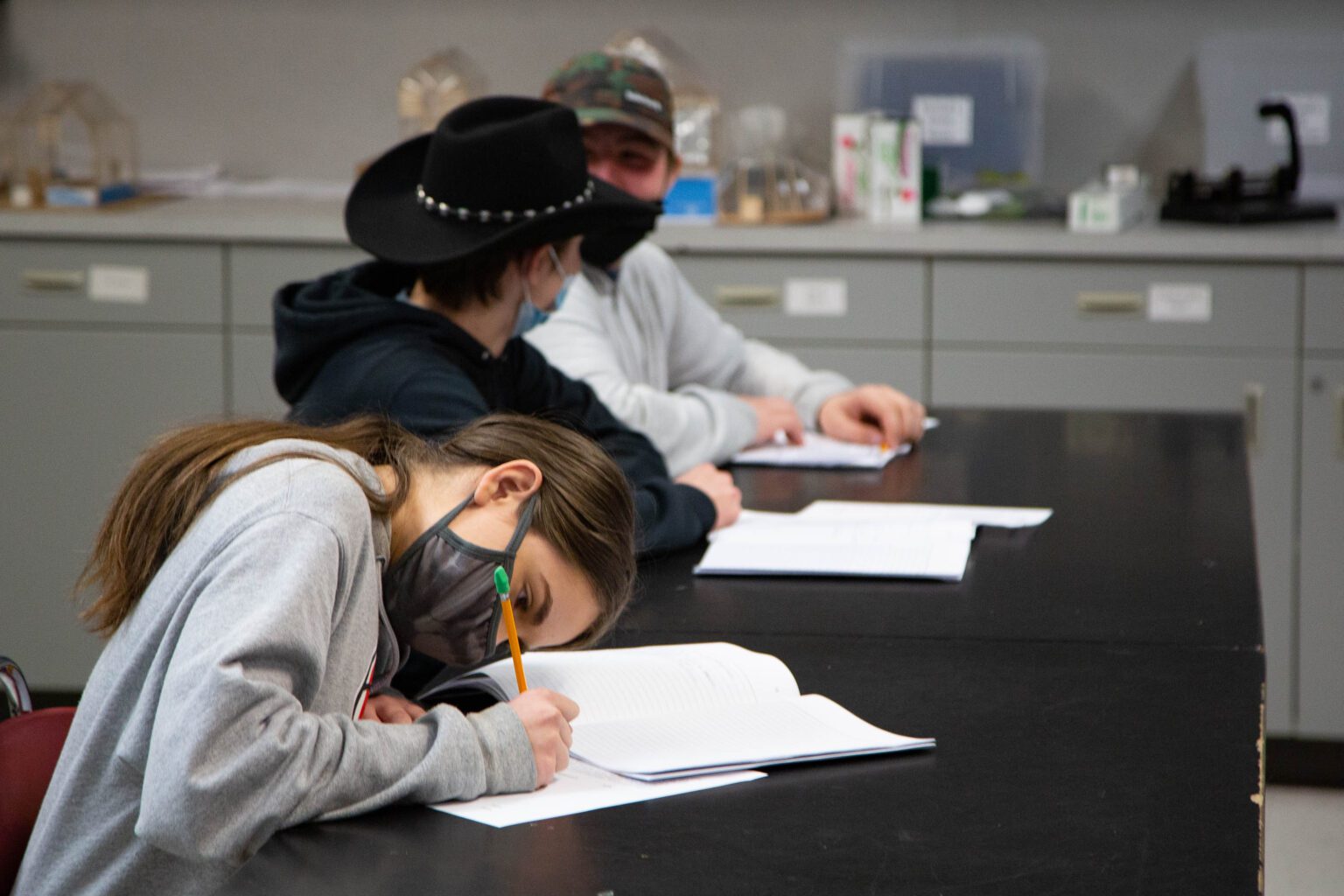With a surge of COVID-19 cases around the county, local schools and colleges continue to weigh options about whether to return completely online or stay in-person and how to handle outbreaks.
This past week, all students in the Blaine School District went online due to “staff and student absences over the last two weeks related to COVID-19.” Mount Baker School District’s Acme Elementary, four classrooms at Kendall Elementary and one at Harmony Elementary went online for five days due to an increase in cases. In the first week of January, Meridian School District returned to distanced learning due to a “staffing shortage and the increase in COVID-19 transmission.”
At Western Washington University, where 89% of classes are either fully in-person or hybrid (a combination of classroom and remote teaching), students and faculty went online for the first three weeks of the term due to a significant spike in COVID-19 cases. Northwest Indian College returned to full distanced learning for the remainder of the quarter “to minimize further disruption of classes for students and faculty for the duration of the quarter.” Whatcom Community College delayed the start of the quarter to give students time to test for COVID-19 before returning.
Ultimately, the goal for school and college administrators is to keep kids in school.
“It is our number one priority, and it continues to be our biggest priority,” said Washington State Superintendent of Public Instruction Chris Reykdal in a press conference. “I just, again, want to thank all the parents, students and staff in our school system who have made that the number one expectation of the year that we’re in person, and we’re learning with fidelity. It’s gone exceedingly well although we’re really challenged right now like others with omicron.”
The office of the superintendent continues to enforce mask wearing and encourages students to take the COVID-19 vaccine in an attempt to limit outbreaks.
Bellingham Public Schools initially ramped up testing for students and staff with symptoms or were a close contact, but after a few weeks they had to limit testing due to insufficient availability. Along with other school districts with guidance from the Department of Health, Bellingham also instituted a “Test to Stay” policy which allows “students or staff who had exposure to COVID-19 outside of school … continue attending school during their five-day quarantine period as long as they don’t have symptoms of illness.”
“We will continue to plan in case remote learning is temporarily needed for a class or a school, but at this time we are not going fully remote,” superintendent Greg Baker said in an email to families and the community.

Despite the intent to stay in-person, all school districts are required to have contingency plans in the event of an outbreak. The state defines an outbreak at a school as three cases or 10% of people within a specific group, like an elementary school classroom.
When Meridian School District briefly went online, they had been able to forecast the need to switch based off of rising cases and asked teachers to practice accessing remote tools. When the decision was announced, students had their laptops charged and were ready to jump back onto Google Classroom for three days, the district said.
For other school districts, returning online can be much more complicated. In Ferndale School District, many students cannot access the internet due to the complex geography of the region and lack of broadband infrastructure in certain parts of Whatcom County.
During the pandemic, Ferndale schools distributed internet hot spots to students living in these areas, but some could still not connect. To get those kids online, the district created and staffed Safe Remote Access Sites where students were able to log-on to their online classes and receive lunches.
To go back online now, they would have to find ways to ensure all students can get online to keep all of them consistently learning.
“The idea of going back online is daunting,” said Faye Brit, executive director of teaching and learning at Ferndale School District.
This year, the state also changed the guidelines for full-time online learning in public schools. If a school or classroom goes online, 70% of the day must be “synchronous,” meaning students and teachers are learning and completing tasks together. Essentially, students and teachers must be on their laptops in front of a camera for most of the day. Under prior, more flexible guidelines, students were given more time to learn and complete tasks on their own time and at their own pace.
Ferndale administrators discussed how people, especially children, don’t do well sitting in front of a computer all day.
“We know that our students do better in school,” Brit said.
Ferndale School District said they have three main goals: to keep staff and students safe, to continue to provide in-person learning and continue to rely on guidance from local and state health officials.




